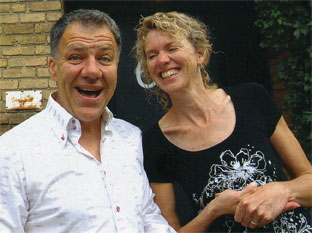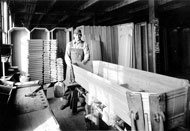Leasing Information – For information on leasing a studio, please contact the office at 612.788.5551






John Kremer and Jennifer Young, partners in business and in life, have been quietly turning Northeast Minneapolis into artist’s colony. In 1991, they purchased the California Building and transformed it into affordable studio space, offering refuge to hundreds of Twin Cities visual artists. Recognizing a dearth of community, Kremer and Young dedicated themselves to “arts sustainability” – creating buildings for artists that are sustainable into the future. Conscious of the conflicts that the rush of daily life put on “our ability to see and feel deeply,” John seems intent on preserving a sense of humanity as well. In fostering an arts community that will outlast etch-a-sketch locales that flash in and out of fashion, the pair sticks to old buildings in Northeast. For John, saving historic structures is akin to “keeping all the teeth in a smile,” as with their projects a few years ago to develop the Ritz theater on 13th Avenue NE into a home for Ballet of the Dolls.
The couple now owns four other NE properties: the Casket Arts, Carriage House, Garland and Oddfellows buildings. Jennifer is passionate about providing the artist diaspora a place they can count on, a calling she suspects grew out of her Catholic upbringing and lessons about serving others. “Just imagine what this could be in a hundred years,” she says.
Kremer and Young met at a poetry reading at Mayslack’s bar in 1990 and quickly discovered a mutual love of nature. Talk of their work invariably involves gardening. “John tends the trees, I tend the flowers,” Jennifer says. “He loves to plant white pines, well knowing that he will never see the results. But the next generation will.”

History of Casket Arts Building
The Northwestern Casket Company dates back to 1882, making it one of the oldest buildings in the twin cities. The casket company was primarliy a manufacturer and distributor of funeral supplies such as high quality funeral cars, ambulances, burial garments, burial vaults and caskets.
Daily shipments of raw lumber were delievered to the plant where crafts,an would create and asssemble the shell of the casket as well as customizing the interior fabric. Caskets were ordered by funeral directors via express telegraph or US Postal Service and shipped by train to the funeral provider.
The company occupied the building until 2005, and the current owners are breathing new life into the building with the goal of creating space for artists.
